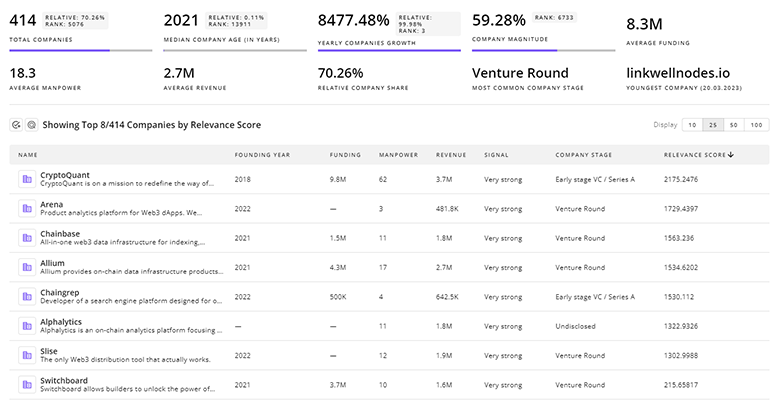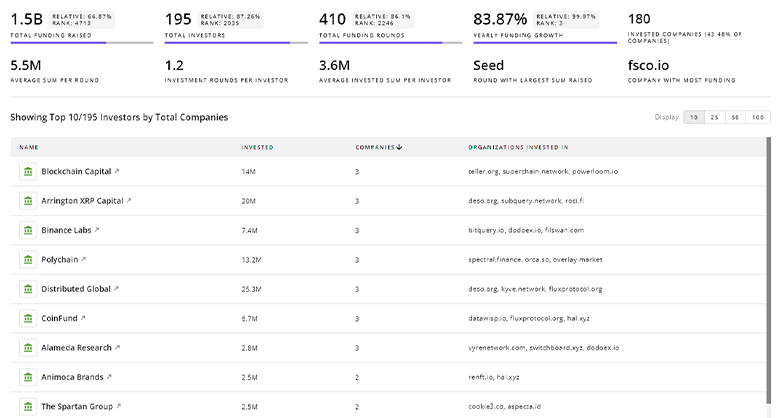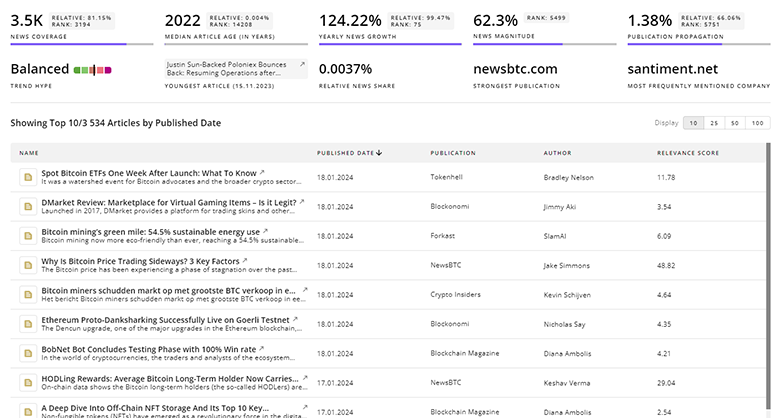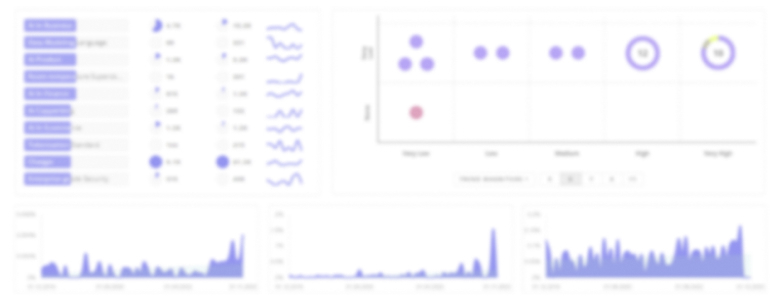
Multi Cloud Computing Report
: Analysis on the Market, Trends, and TechnologiesThe Multi-Cloud Computing report reveals a dynamic landscape where enterprises increasingly deploy services across multiple cloud providers to boost resilience, optimize costs, and avoid vendor lock-in. The industry displays robust innovation via unified management platforms, specialized migration tools, integrated security, and efficient resource allocation, despite observed declines in legacy growth metrics. Forward-looking analyses, supported by strategic patent filings and evolving corporate offerings, indicate that enhanced interoperability, automation, and data protection will be critical factors for future success (Flexera 2023).
We last updated this report 17 days ago. Tell us if you find something’s not quite right!
Topic Dominance Index of Multi Cloud Computing
To gauge the impact of Multi Cloud Computing, the Topic Dominance Index integrates time series data from three key sources: published articles, number of newly founded startups in the sector, and global search popularity.
Key Activities and Applications
- Business Workload Management: Enterprises are leveraging multi-cloud strategies to deploy workloads across public, private, and hybrid environments to minimize downtime and singular point-of-failure risks. For example, companies like Wanclouds Inc. provide Migration as a Service, Disaster Recovery as a Service (DRaaS), and Cloud Cost Optimization to streamline transitions and ensure continuous operations.
- Unified Management Platforms: Consolidated dashboards and unified APIs are key to managing heterogeneous cloud environments. Platforms such as Cross4Cloud’s SaaS offering deliver centralized cloud control enabling deployment, monitoring, and reporting across providers.
- Cost Optimization and Compliance: Automated cost measurement and allocation tools, as provided by solutions like Centilytics, help enterprises gain 360-degree visibility into cloud spending while ensuring compliance through consolidated governance and reporting.
- Security and Resilience: Multi-cloud strategies are increasingly used for risk mitigation by enabling rapid failover between providers, as highlighted in industry analyses and supported by robust security investments from major vendors such as IBM and Microsoft.
- Specialized Data Services: With rising concerns over data sovereignty and performance, companies like Faction Inc. offer patented networking fabrics that seamlessly integrate data across clouds, ensuring both scalability and security.
Emergent Trends and Core Insights
- Shift Toward Unified, Cloud-Agnostic Solutions: The trend has moved from single-cloud deployments to a proactive multi-cloud strategy, as demonstrated by unified management platforms that are now incorporating AI-driven insights and automation.
- Patent and Technological Momentum: Numerous patents – for instance, on hybrid cloud computing systems based on cloud buses and cross-cloud management apparatus – underscore the technical drive toward scalable, integrated solutions.
- Market Consolidation Amid Declines: While the overall market has matured, several segments of the cloud computing ecosystem, particularly traditional public cloud growth, have shown declines in company counts and media coverage. This suggests an industry pivot toward specialized, integrated solutions rather than broad-based expansion.
- Industry-Specific Solutions: Industries are increasingly adopting tailored multi-cloud architectures to meet unique regulatory and performance requirements. For example, service providers such as CloudAware and Cloudian are focusing on delivering cost analytics, compliance, and security through centralized platforms.
- Growing Importance of Data Sovereignty: With cross-border data challenges and regulatory constraints, forward-looking multi-cloud strategies must balance cost and performance with strong governance and data protection measures, as is evident from emerging solutions like OneCloud’s integrated cloud management systems.
Technologies and Methodologies
- Unified APIs and Management Dashboards: Key technological advancements include the development of unified application programming interfaces (APIs) that allow seamless management across disparate cloud platforms. Cross4Cloud’s solution, for example, centralizes multi-cloud operations into a single pane of glass, streamlining both monitoring and automated remediation.
- Container Orchestration and Microservices: The integration of container technologies such as Docker and Kubernetes is pivotal, allowing companies like Harmony Cloud and OneCloud to facilitate hybrid cloud deployments and optimize workloads through efficient container orchestration.
- Advanced Security and Compliance Tools: Multi-cloud security solutions are evolving to incorporate features like vulnerability scanning, intrusion detection, and automated patch management. Cloudaware’s integrated CMDB and security modules exemplify how real-time monitoring and automated compliance reporting drive enhanced security postures.
- Data Management and Integration: Techniques for distributed storage – such as Faction Inc.’s patented networking fabric – enable real-time data sharing across clouds. This method eliminates data gravity concerns by presenting a unified data view that supports high resilience and low latency.
- Intelligent Automation Platforms: Incorporation of AI and machine learning, as seen in platforms like emma and Centilytics, is streamlining resource optimization, cost allocation, and operational monitoring across multi-cloud environments.
Multi Cloud Computing Funding
A total of 298 Multi Cloud Computing companies have received funding.
Overall, Multi Cloud Computing companies have raised $29.4B.
Companies within the Multi Cloud Computing domain have secured capital from 1.1K funding rounds.
The chart shows the funding trendline of Multi Cloud Computing companies over the last 5 years
Multi Cloud Computing Companies
Enhance your understanding of market leadership and innovation patterns in your business domain.

2.3K Multi Cloud Computing Companies
Discover Multi Cloud Computing Companies, their Funding, Manpower, Revenues, Stages, and much more
Multi Cloud Computing Investors
TrendFeedr’s Investors tool offers comprehensive insights into 1.3K Multi Cloud Computing investors by examining funding patterns and investment trends. This enables you to strategize effectively and identify opportunities in the Multi Cloud Computing sector.

1.3K Multi Cloud Computing Investors
Discover Multi Cloud Computing Investors, Funding Rounds, Invested Amounts, and Funding Growth
Multi Cloud Computing News
TrendFeedr’s News feature provides access to 12.5K Multi Cloud Computing articles. This extensive database covers both historical and recent developments, enabling innovators and leaders to stay informed.

12.5K Multi Cloud Computing News Articles
Discover Latest Multi Cloud Computing Articles, News Magnitude, Publication Propagation, Yearly Growth, and Strongest Publications
Executive Summary
Multi-cloud computing is evolving into a strategic, integrated domain where enterprises increasingly rely on unified, cloud-agnostic platforms to manage their IT infrastructure. This report shows that despite challenges such as declining growth in traditional segments and increasing complexity, advancements in unified management tools, container orchestration, and security automation are driving significant innovation. Stakeholders are encouraged to adopt intelligent, automated multi-cloud strategies to mitigate risk, optimize cost and performance, and prepare for a future where data sovereignty and seamless interoperability are paramount.
We value collaboration with industry professionals to offer even better insights. Interested in contributing? Get in touch!












